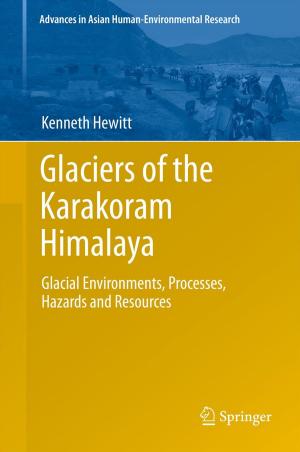Sulphur in Agroecosystems
Nonfiction, Science & Nature, Science, Biological Sciences, Botany, Nature, Environment, Environmental Conservation & Protection| Author: | ISBN: | 9789401151009 | |
| Publisher: | Springer Netherlands | Publication: | December 6, 2012 |
| Imprint: | Springer | Language: | English |
| Author: | |
| ISBN: | 9789401151009 |
| Publisher: | Springer Netherlands |
| Publication: | December 6, 2012 |
| Imprint: | Springer |
| Language: | English |
This is the second volume in the series Nutrients in Ecosystems. Sulphur as an essential plant nutrient has received little attention. This is explained by the facts that sulphur was obviously in sufficient supply from the atmosphere, from soil and as a by-product in mineral fertilizers. Increases in the yield potential and thus in the nutrient requirement of modern crops, however, as well as remarkable changes in SO2 emissions by private households, power stations and industry, associated with legislative measures to reduce air and water pollution, have altered the situation to a large extent. In particular the public concerns about forest decline and pollution-induced climatic changes have initiated extensive research programs on the physiological functions of sulphur in plants, on the occurrence and plant availability of sulphur in agricultural and forest soils and on the chemistry of sulphur compounds in the tropo- and stratosphere.
This book cannot be an encylcopedia of sulphur in all the media mentioned nor in all ecozones of the globe. However, it aims to give an overview of our present knowledge with a special focus on the sulphur situation in agrosystems of industrialised Western Europe. The ecological trends for sulphur observed in this region during recent decades are likely to be mirrored wherever industrialisation and urbanisation take place and where an increasing standard of living demands clean air, good drinking water and nutritious food. Agricultural production systems, therefore, require well-founded information on the actual sulphur nutrition and potential sulphur-fertilizer requirement of crops and soils respectively. It is hoped that this book will provide this information and will encourage further research where open questions still exist.
This is the second volume in the series Nutrients in Ecosystems. Sulphur as an essential plant nutrient has received little attention. This is explained by the facts that sulphur was obviously in sufficient supply from the atmosphere, from soil and as a by-product in mineral fertilizers. Increases in the yield potential and thus in the nutrient requirement of modern crops, however, as well as remarkable changes in SO2 emissions by private households, power stations and industry, associated with legislative measures to reduce air and water pollution, have altered the situation to a large extent. In particular the public concerns about forest decline and pollution-induced climatic changes have initiated extensive research programs on the physiological functions of sulphur in plants, on the occurrence and plant availability of sulphur in agricultural and forest soils and on the chemistry of sulphur compounds in the tropo- and stratosphere.
This book cannot be an encylcopedia of sulphur in all the media mentioned nor in all ecozones of the globe. However, it aims to give an overview of our present knowledge with a special focus on the sulphur situation in agrosystems of industrialised Western Europe. The ecological trends for sulphur observed in this region during recent decades are likely to be mirrored wherever industrialisation and urbanisation take place and where an increasing standard of living demands clean air, good drinking water and nutritious food. Agricultural production systems, therefore, require well-founded information on the actual sulphur nutrition and potential sulphur-fertilizer requirement of crops and soils respectively. It is hoped that this book will provide this information and will encourage further research where open questions still exist.















